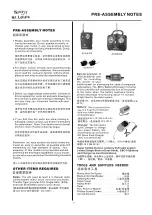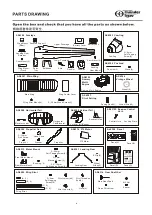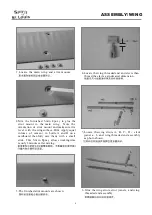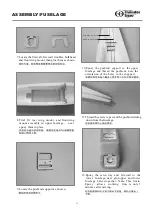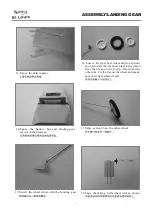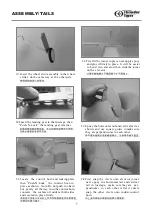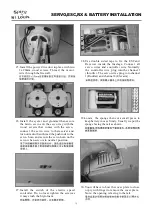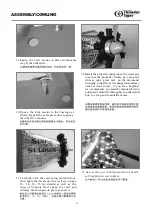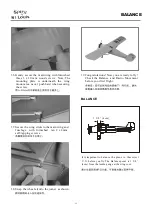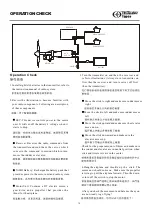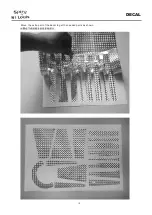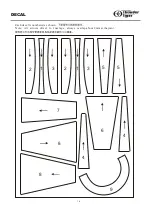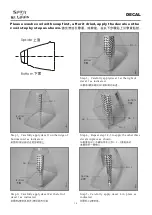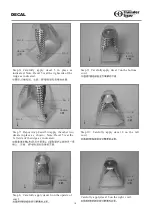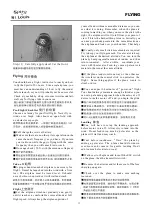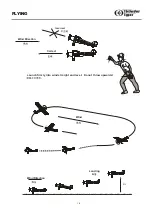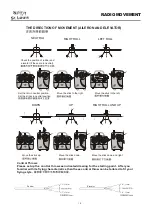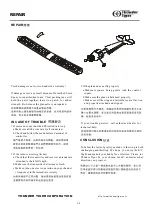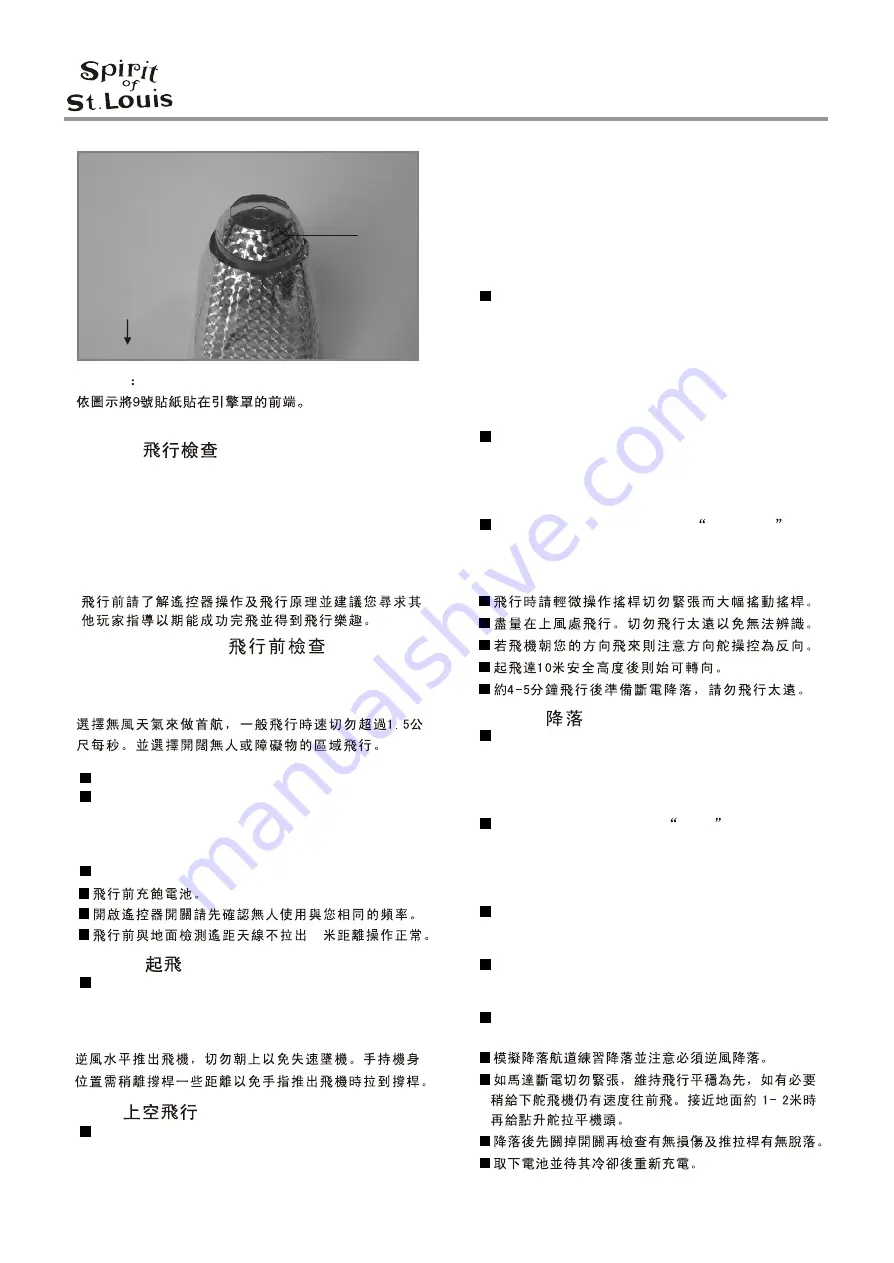
yourself and within a reasonable distance so you can
see what it is doing. Remember, when the plane is
coming toward to you, when you move the stick to the
right , the airplane will roll to left from your point of
view. This is the hardest thing to learn. Initially, you
can keep your body pointed in the same direction as
the airplane and look over your shoulder. That helps.
Usually, only small stick movements are required.
Try to keep your flying smooth. Use elevator to keep
the airplane at the desired altitude. You can turn the
plane by bumping small amount of rudder and then
return to neutral. After a while, coordinate your
turns with the elevator. Feed ing some up elevator to
maintain the turn at the same altitude.
If the plane tends to roll one way or the other use
the trim lever on the control stick to neutralize the
flight. Same thing applies if the plane wants to
climb or dive.
You can expect 3-4 minutes of power-on
flight.
You should always maintain enough altitude so you
can set up a landing approach when the auto-cut off
device turns the motor off and you begin the glide.
Landing
You will have to set up the landing approach
before motor cuts-off. Always try to land into the
wind. Do not feed in too much up elevator as the
plane will stall and may crash.
Just before touchdown,
flare
the plane by
adding up elevator. The plane should slow down
even more and come in for gentle landing. Don't
add too much elevator too soon!
Walk over to the plane and turn off the ESC switch
on the plane, then the transmitter switch.
Remove the batteries and let them cool off before
charging up again.
Check over the plane to make sure nothing
loosened.
FLYING
Flying
20
Pre-Flight Checklist
Choose a calm day for your first flight. Never fly in
winds over 5mph. Also choose an open field with
no obstacles or people.
Full charge the receiver battery.
Make sure there are no other pilots operation on the
same channel ( frequency ) as you have. If you turn
your radio on while the guy is flying with the same
frequency then you will cause him to crash.
Do range check ( 50 ft. with the antenna collapsed) .
Take-off
A proper hand-launch of airplane is necessary for
flight. It must be launched into the wind with a firm
toss. The airplane must be tossed level. It should
never be thrown upward or it will stall and crash.
Flight
Let the airplane climb out gradually and gently
until it reaches a comfortable cruise altitude at full
flight speed. Always keep the airplane upwind of
You should have a flight instructor to teach you how
to fly the Spirit of St. Louis. Like a real airplane, you
must have an understanding of how to fly the model
before launch, or you will probably not be successful.
Check at your hobby shop or contact www.modelair-
craft.org for flying clubs in your area.
17
Step 12
Carefully apply decal 9 at the front.
No . 9

